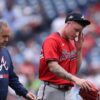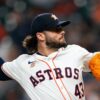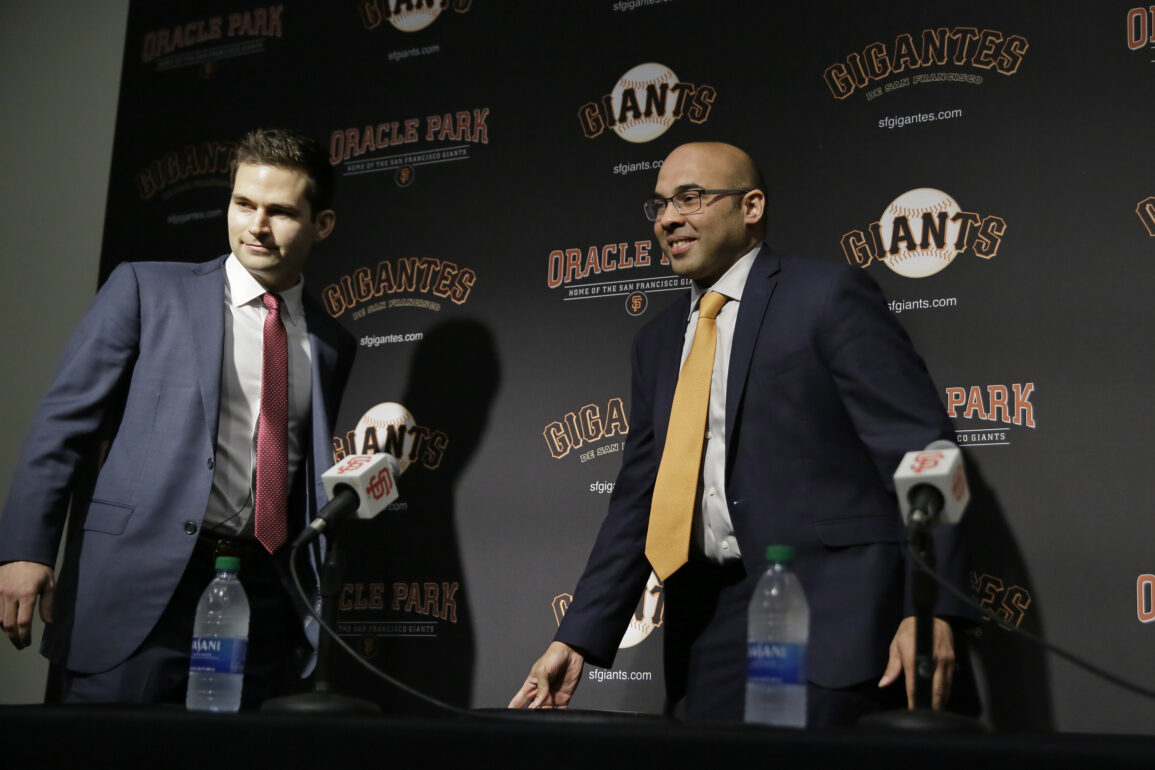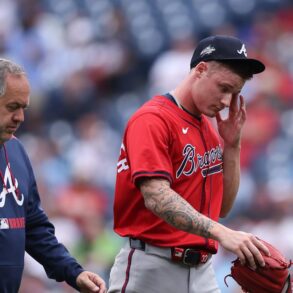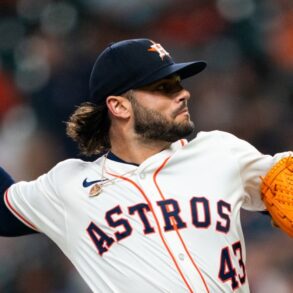You’re not going to want to hear this, but the Tigers didn’t sweep the Giants out of Detroit because they’re an empirically better baseball team. They’re a good team, possibly a better team overall, and certainly a better team right now, but there are more similarities than differences between the two rosters.
Advertisement
There’s one difference that can explain an awful lot, though.
We’ll get to that difference, but let’s get the gory details out of the way first. The Giants allowed 10 runs in a three-game series (good) but scored five (bad), and they saved their three-run offensive explosion for the only game of the series in which the Tigers scored more than three runs. Wednesday’s 4-3 loss was the 11th game in a row in which the Giants scored fewer than four runs, which is tied for the 11th-longest stretch in San Francisco era history. To find the last time they did it, you’ll have to go back to May 2024. Most of the players in those games last season were in the Giants’ starting lineup for the Tigers series. The state of the Giants’ offense is “emergency,” and there aren’t any easy answers.
With that out of the way, let’s move to the original assertion, which is that the Giants and Tigers are more similar than different. Start with the architects of large chunks of both teams. Farhan Zaidi is still responsible for a large portion of the current Giants roster, and Tigers president of baseball operations Scott Harris is responsible for the bulk of the Tigers roster. Then there’s a little Venn diagram where Harris is at least partially responsible for some of the Giants’ moves, back from his days as their GM. It’s not much of a stretch to think that there’s some Giants DNA in some of the Tigers’ moves, too, with Harris almost certainly learning some of the transactional dark arts from his mentor.
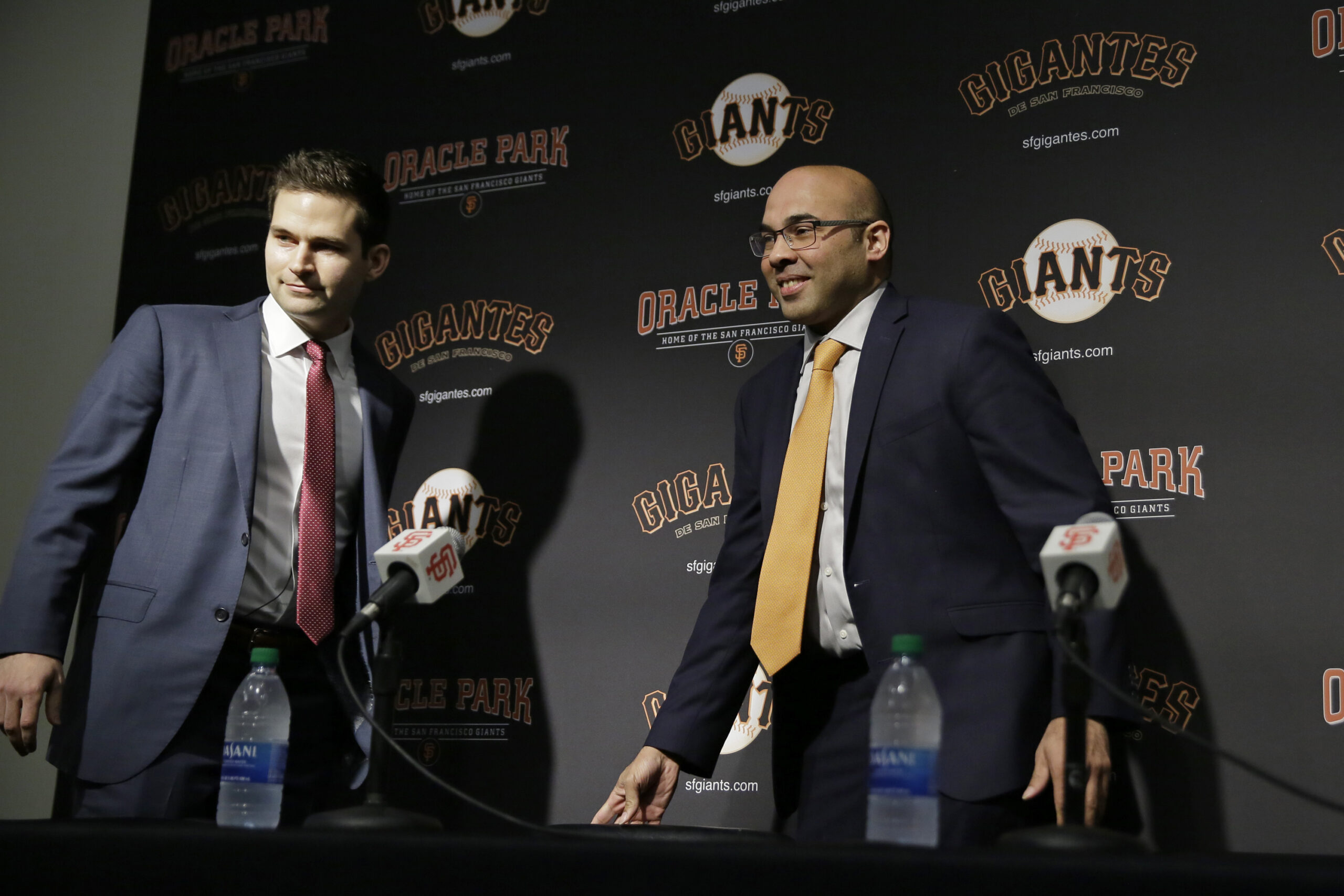
Scott Harris (left) and Farhan Zaidi from their Giants days. (Eric Risberg / Associated Press)
That’s notable, but it’s far from the end of the similarities. The Tigers are led by one of the few traditional aces left in baseball, Tarik Skubal, who is a steady, durable strike thrower of the highest order. The Giants are one of the only teams in baseball with a pitcher of the same genre (Logan Webb). They’re both the tips of their respective teams’ run-prevention spear, and both teams have pitching staffs that can help their teams win, even when their lineups aren’t scoring much.
Advertisement
Neither team is built to out-slug their opponents. The Tigers have 65 home runs on the season, whereas the Giants have 55. Both are respectable numbers, especially given their respective ballparks, but they’re unambiguously pitching-first teams when everything is working right. They’re not going to run wild on their opponents, either. The Tigers are one of only three teams in baseball with fewer stolen bases than the Giants. Both teams have been good at finding pitchers in the later rounds of the draft, including their aces, and both teams have been good at finding diamonds in the rough, to the degree that Zach McKinstry even looks like it could be an anagram of “Mike Yastrzemski.”
There are other minor similarities, but the point isn’t to list them all to the point of being tedious. The point is to explain the most glaring difference between them. It’s why one team has the best record in baseball, and the other team couldn’t hold on to the best record in baseball. It’s like the old Clinton-era catchphrase about the economy, but repurposed for baseball teams: It’s the first-round picks, stupid.
Heliot Ramos had three of the Giants’ 10 hits on Wednesday, including a two-run home run. His offensive resurgence over the last month has been a huge reason why the Giants are merely scuffling to string wins together, rather than suffering through a stretch that’s bad enough to undo everything from the first three weeks of the season. They might pull off that last part eventually — don’t count them out! — but for now, Ramos has been one of their most important players. He was a first-round pick, and he’s hitting like one.
Ramos was also drafted in 2017, which was quite a while ago. That’s the year that Apple released the iPhone 8, Nintendo released the Switch and Ty Blach led the Giants in starts, with 34. Ramos has been the Giants’ most productive first-round pick since Joe Panik in 2011, an island in a sea of unknown futures and disappointing careers. The other Giants’ first-rounder to succeed with the team was Patrick Bailey, but you can use the verb “succeed” to be in the past tense, if you’re cynical. In the eighth inning of Wednesday’s game, with runners on second and third with nobody out, Bailey popped out on the first pitch, dropping his OPS to .489.
Still, if you’re using Bailey as an example of the Giants’ first-round failures, you’re doing the exercise wrong. He has established himself as an everyday player with clear major-league skills, even if his bat is light years behind his Gold Glove right now. He’s one of the examples of a first-round pick that’s gone right for the Giants. You can decide for yourself if Joey Bart belongs in that category (he’s essentially tied with Bailey in WAR this season, if you were thinking about picking that fight again).
Advertisement
The Tigers, on the other hand, are in first place because of the contributions of Spencer Torkelson and Riley Greene, two top-five picks in recent drafts. It wasn’t long ago that Torkelson was considered a cautionary tale, but youth was on his side, and he’s finally developing into the player he was expected to be. Greene didn’t have the same developmental hiccups, moving from a No. 5 pick in 2019 out of high school to a superstar in short order. It was a remarkably deep draft that year, with several regulars and award contenders already established in the majors. Only one player taken in the top 10 of that draft hasn’t appeared in the majors yet. You get one guess as to which team drafted him.
The Giants would have less of a need for the Tigers’ other first-round picks who are helping them out, right-handed starters Jackson Jobe and Casey Mize, but it’s still worth noting the disparity in value they’re getting out of their first-rounders. Mize would have been in the Giants’ rotation right now, if not for a Pablo Sandoval walk-off home run, which is another entry for the “If it wasn’t for my horse …” files.
The Giants have Ramos thriving and Bailey trying to get his swing back, but that’s it for their first-round picks. They’re still a remarkably homegrown team — with the fourth-most homegrown players on their active roster, tied with the … Tigers, of course. But a lot of their homegrown players are development successes from the middle to lower rounds of the draft. Their burgeoning young rotation is built on impressive later-round picks like Webb, Kyle Harrison, Hayden Birdsong and Landen Roupp. Their bullpen has two of their only international amateur free agent successes since Juan Marichal, with once and future closer Camilo Doval and Randy Rodríguez.
That extra push, that extra oomph, that could get the Giants to that next level is the one that teams typically find with their first-round picks. Every era of Giants baseball can be defined by their first-round successes and failures, from the “You Gotta Like These Kids!” teams that turned Will Clark and Matt Williams into a pennant, to the Barry Bonds teams that were seemingly just one player away from getting a championship out of the best hitter of all-time. Every team in the championship era had several first-round picks leading the way, and the first one in 2010 had three of them in the rotation and one behind the plate.
Even the Dodgers aren’t anything without their first-round picks. Without Clayton Kershaw, Corey Seager and Will Smith, they don’t turn into the same kind of juggernaut that can tempt Shohei Ohtani. One of the biggest reasons they’re not out to a 10-game lead in the NL West this season is that they’ve hit a similar dry patch since drafting Smith in 2016.
There’s still hope. Maybe not necessarily for this season, but beyond. Bryce Eldridge is still a marvel, and James Tibbs III is having a monster May. Bailey has hit in the majors before, so it’s not entirely outlandish to hope he can do it again.
Right now, though, the Giants are missing that special oomph that comes from an unambiguously talented top prospect giving his team way more value than his signing bonus cost them. It’s the difference between a team that’s somewhere between average and good (the 2025 Giants) and a team that’s somewhere between good and great (the 2025 Giants). It’s one of the reasons the Giants just got swept, and considering the glacial nature of the development of most prospects, it’s unlikely to get fixed soon.
(Top photo of Riley Greene: Duane Burleson / Getty Images)
This post was originally published on this site be sure to check out more of their content.


